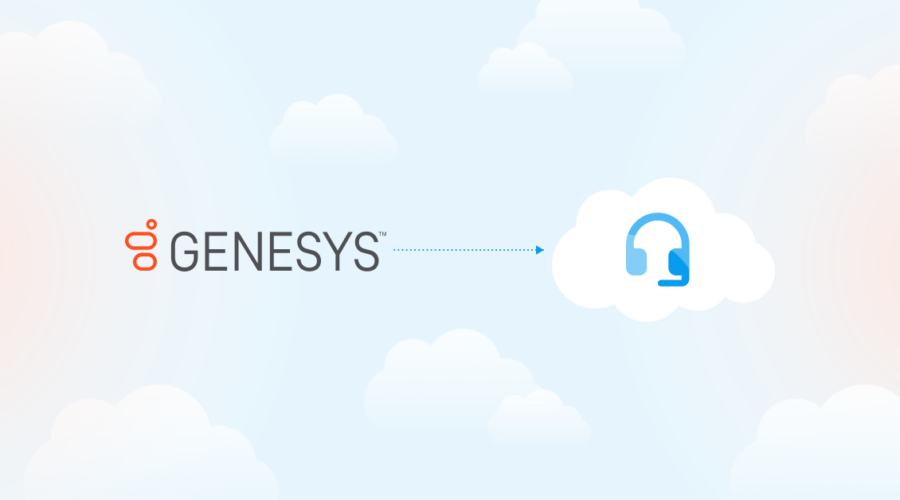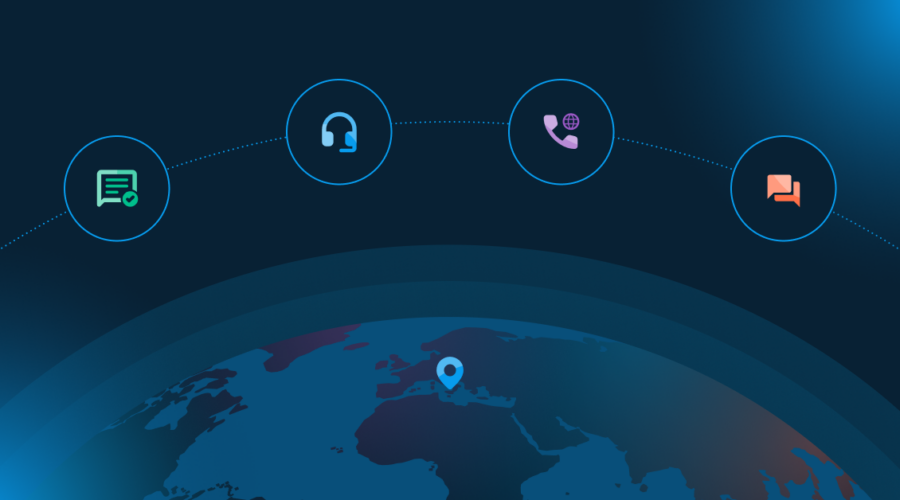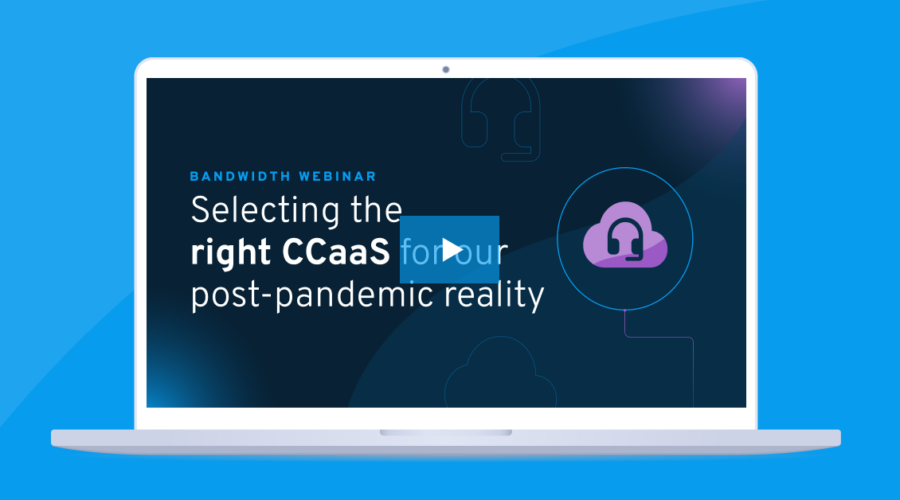Businesses continue to turn to omnichannel contact center solutions, and it’s not hard to see why.
Today’s customers demand more, and according to a 2024 Salesforce study their expectations are sky-high:
- 77% expect immediate interaction when they contact a company
- 79% expect consistency across departments
- 65% expect businesses to keep up with their changing needs and preferences
Customers expect nothing less than a red-carpet VIP experience. In fact, the same study also found that 86% of agents agree that customer expectations have soared through the roof, so companies absolutely need to step up their channel strategy game.
Omnichannel communication has become the new norm in helping businesses meet these heightened demands across various channels. But is it truly enough to complement the rising expectations of modern customers?
Let’s find out!
What is omnichannel?
Omnichannel is a system that integrates the many different ways your customers might reach out—phone, email, chat, social media—into one platform to deliver a continuous experience. For instance, when you leverage messaging and toll-free voice together in your omnichannel communications stack, your customer can begin a support conversation using 2-way SMS before escalating to a toll-free phone call for a more in-depth discussion.
Are multichannel and omnichannel centers the same? Not exactly. Multichannel uses multiple methods of communication, but they’re each managed individually which leads to siloed and disconnected interactions. On the other hand, an omnichannel contact center provides agents with a 360-degree unified preview of the customer interaction history and all the relevant context they require, even if the customer hops back and forth from one channel to another. Going back to our earlier example, when the customer gets connected to an agent after having already explained the support issue via SMS, the agent can pick up right where the text conversation left off with all the relevant history. Customer friction is reduced and the agent can also solve the request faster.
And there’s way more to feel giddy about when it comes to omnichannel contact centers.
The benefits of omnichannel contact center solutions
A whopping 71% of CX leaders prioritize a CX platform that integrates systems—and for good reason. Here’s what’s in it for you when omnichannel communications become the cornerstone of your CX strategy:
- More loyal customers. With an omnichannel center, customers can reach out on their terms without repeating information across different channels. This convenience leads to faster issue resolution and increased customer satisfaction. Ultimately, companies with strong omnichannel engagement retain 89% of their customers versus the 33% retention rate of those with weaker strategies.
- More efficient operations. Omnichannel communication is advantageous for agents, too, especially since 26% often feel they’re in the dark about a customer’s situation. An integrated omnichannel system solves this gap in context by weaving together the customer journey across support channels and enabling agents to deliver resolutions more swiftly.
- More business growth. An industry study showed companies that apply omnichannel customer engagement strategies see a 9.5% annual boost in revenue and a 7.5% yearly reduction in cost per customer contact. Moreover, the rich amount of customer data extracted from integrated channels helps you identify new (and better) ways to grow.
An omnichannel center is a solid start, but could it be even smarter?
There’s no denying that omnichannel communication is a significant improvement over siloed channels. But it’s easy to get caught up in offering more channels instead of focusing on the right channels for each customer. The result? Customers might bounce between channels and feel a bit overwhelmed in the process. In fact, interactions that require high effort—like channel switching or repetition—cause disloyalty in 96% of customers and lead only 4% to have repurchasing intent.
It’s a paradox of choice—the more options you give customers, the more effort they exert in choosing, and the less satisfied they become. But what if you could offer ‘better’ instead of ‘more’? That’s the promise of optichannel.
Are you using the best CCaaS for the job?
Learn how to make an informed decision about which cloud platform best suits your contact center’s present and its future.

Introducing optichannel
Optichannel builds upon the groundwork for connected customer experiences laid out by omnichannel communications. In a nutshell, it helps determine which channel works best for every interaction based on advanced analytics.
For example, if an issue is typically resolved via self-service, the system will point the customer in that direction. However, if data suggests that this customer would prefer phone support, it will adapt accordingly.
In other words, while omnichannel aims to be everywhere, optichannel wants to be in the right place at the right time.
What makes optichannel communication so smart?
An optichannel call center uses intelligent tools such as artificial intelligence (AI) and machine learning (ML) to help work out what customers might need or prefer. Then it steers them toward the best support option for the job. Already, 92% of contact centers plan to adopt these technologies in 2024.
Wrapping it all together—AI is the big, smart engine that could. It can interpret what customers say and feel, detect shifts in their behavior, and make smart decisions about how to help them best.
Here are some top ways AI is activated within an optichannel contact center:
- Conversational AI provides virtual agents and chatbots which your customers can engage with directly using natural language processing (NLP)
- Text and speech analytics are derived from AI reading transcriptions of a customer chat or phone call—or listening to the live conversation itself. The AI then analyzes and summarizes the interaction to deliver key insights and takeaways for the agent.
- Sentiment analysis also registers the conversation, but instead focuses on detecting the way customers feel by listening for tone and speech indicators. Then it presents the information through an application that offers guidance to agents on how to improve the customer’s experience.
- Predictive analytics use the contextually gathered information to intelligently anticipate the needs of both the customer and the agent. This results in recommendations like next steps towards resolution, recommended resources, or guidance on situational best practices.
If AI is the mighty ambitious locomotive, ML is the diesel that keeps it chugging along. It allows computers to become more knowledgeable by getting good at combing through a pile of past data—the customer journey, call recordings and transcripts, customer feedback, and other operational data—in order to identify patterns and trends. This helps contact centers figure out the most effective communication channel for each type of interaction so that the customer’s support experience is totally optimized.
Get smart(er) about your contact center solutions
Since the goalposts for exceptional customer experience are always on the move, your channel strategy should be prepared to keep up. But orchestration platforms with closed ecosystems can leave you feeling boxed in, making it difficult to swap or combine technologies as they evolve and as your contact center needs shift. A universal platform like Bandwidth MaestroTM makes it simple to integrate your communications channels with best-in-class providers across UCaaS, CCaaS, conversational AI, and authentication tools. As you prepare your omnichannel present and optichannel future, remember that flexibility is key as you round up the ideal channel mix and intelligence for your customers.




